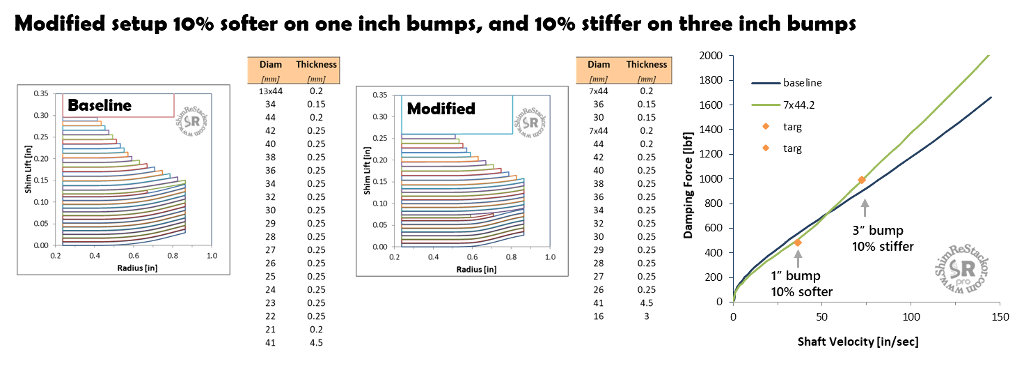Shim stack tuning fundamentals
Shim stacks control a wide range of damping force curve shapes. There is no secret formula to determine the shim stack configuration needed for a specific damping force curve. Shim stacks are tuned by hacking, adding or removing shims, until the desired combination of low, mid and high speed damping is achieved.
However, there are some simple rules. The shim stack fundamentals thread steps through each shim stack feature, examines the influence of that feature on damping force curve shape and the range of curve shapes obtained by controlling the tuning of each feature (more).

Damping force tuning targets
Tuning by clicker settings
One of the most valuable applications of Shim ReStackor is the capability to tune shim stacks to match specific clicker settings and reshape the damping force curve in terms of the real-world forces you can actually “feel” when you ride.
After a test ride, the rider wants to stiffen low speed compression damping by two clicks and loosen up high speed by eight clicks to give more compliance rolling over “trail trash” (more).

Weight scaled damping
Manufactures spend millions perfecting the suspension response, “feel” and behavior of production vehicles. Getting it right is good for sales, especially when magazines rave about the performance.
However, stock suspension damping is specific to the stock spring rate and rider weight the bike was designed for. Changing springs to match rider weight messes up suspension performance.
Spring-mass-damper theory defines the specific relationships between rider weight, spring rate, damping and suspension response. Weight scaled damping corrects the suspension setup for a spring rate change and restores the suspension response, “feel” and behavior the manufacturer intended for the suspension.
The Shim ReStackor weight scaling spreadsheet makes that process easy. Correcting damping for a spring rate change simply requires hacking around on the shim stacks to hit the target damping force curve (more).
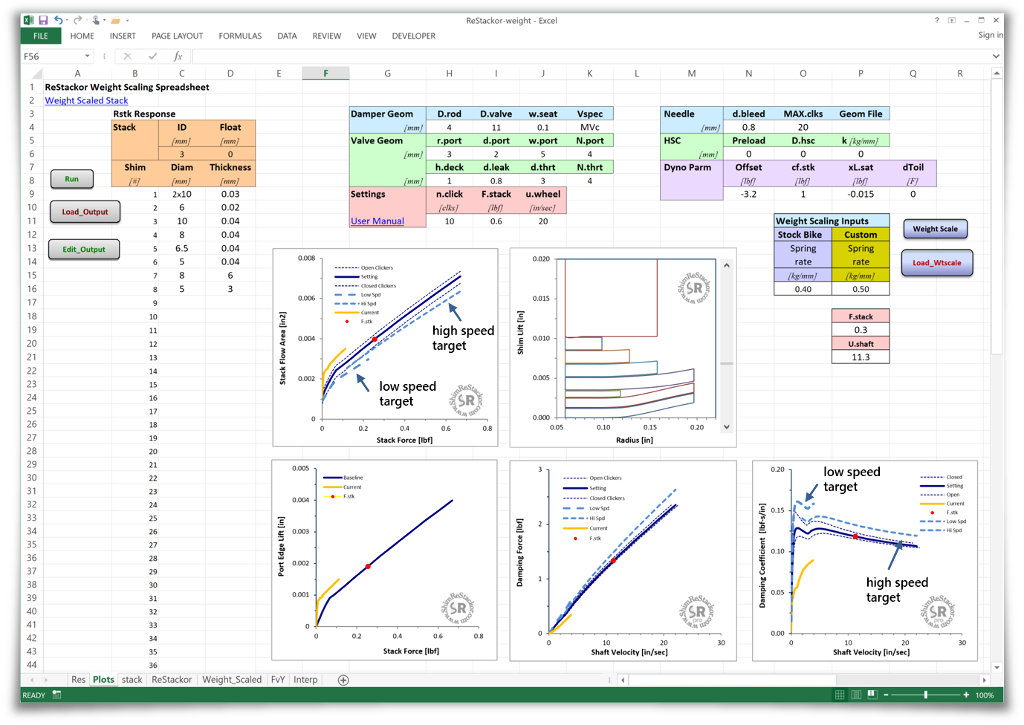
Suspension response sample applications
Bottoming control
Gravity dictates jump landing impact velocities. Shim ReStackor response calculations compute the impact velocity that bottoms the chassis on jump landings.
Preventing bottoming on jump landings simply requires hacking around on the compression shim stacks to absorb the target jump landing impact (more).
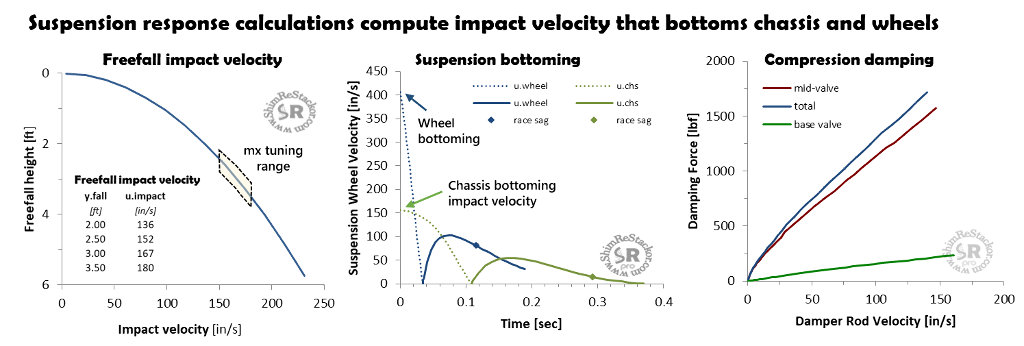
Spring rate selection
There are two ways to prevent suspension bottoming:
- Stiff springs with soft damping
- Soft springs with stiff damping
The typical rule of thumb for fork spring selection varies spring preload from 3 to 15 mm. That range allows a 180 lbm rider to run spring rates from 0.39 to 0.46 kg/mm. What is the difference in ride? (more).
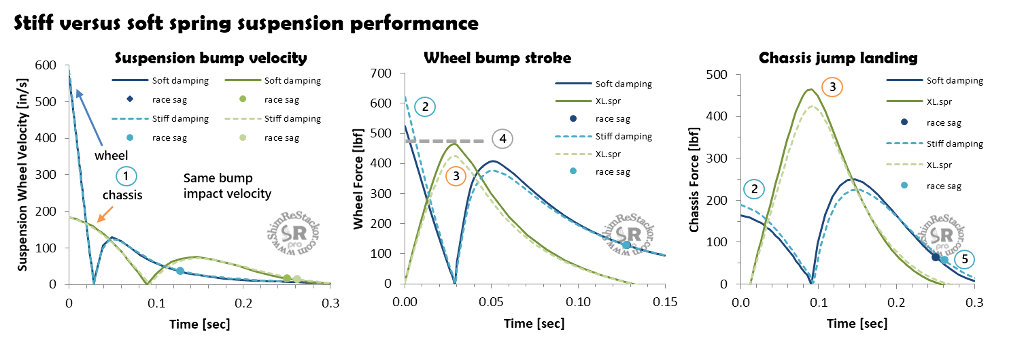
Compression damping tuning
Four damping targets set compression damping. Optimum tuning requires compression damping stiff enough to absorb jump landings and soft enough to avoid chassis deflection compromising wheel traction (more).
- Ultra-low speed: Catch rebound overshoot and hold the suspension "high in the stroke"
- Rebound/compression damping ratio of 0.8:1
- Low speed: Small bump wheel compliance to improve traction
- Compression damping force less than bike weight
- MX jump landings: Bottoming control
- Stiff compression damping at suspension speeds of 150 to 180 in/sec
- High speed: Chassis deflection off three inch and larger bumps
- Compression damping force matches spring force above 200 in/sec

Rebound tuning
Spring-mass-damper theory defines rebound damping at zeta values of 0.7 to provide the fastest possible rebound response, to avoid packing, with damping stiff enough to suppress suspension resonance.
That spring-mass-damper theory fact defines the rebound damping tuning target used in Shim ReStackor suspension response tuning targets (more).
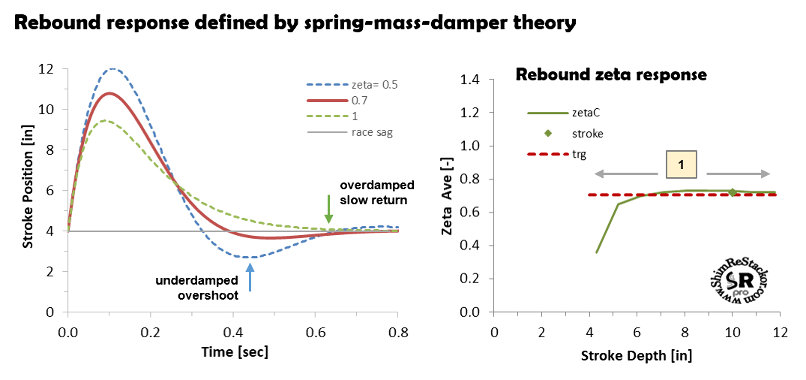
Baseline suspension setup
Suspension tuning “rules of thumb” define the damping targets needed to create a well damped baseline setup. Shim ReStackor response calculations mark those targets on suspension response charts.
Setting up a baseline configuration simply requires hacking around on the shock absorber shim stacks to hit the rebound, high speed compression and low speed compression damping tuning targets or custom targets developed from previous bike setups (more).
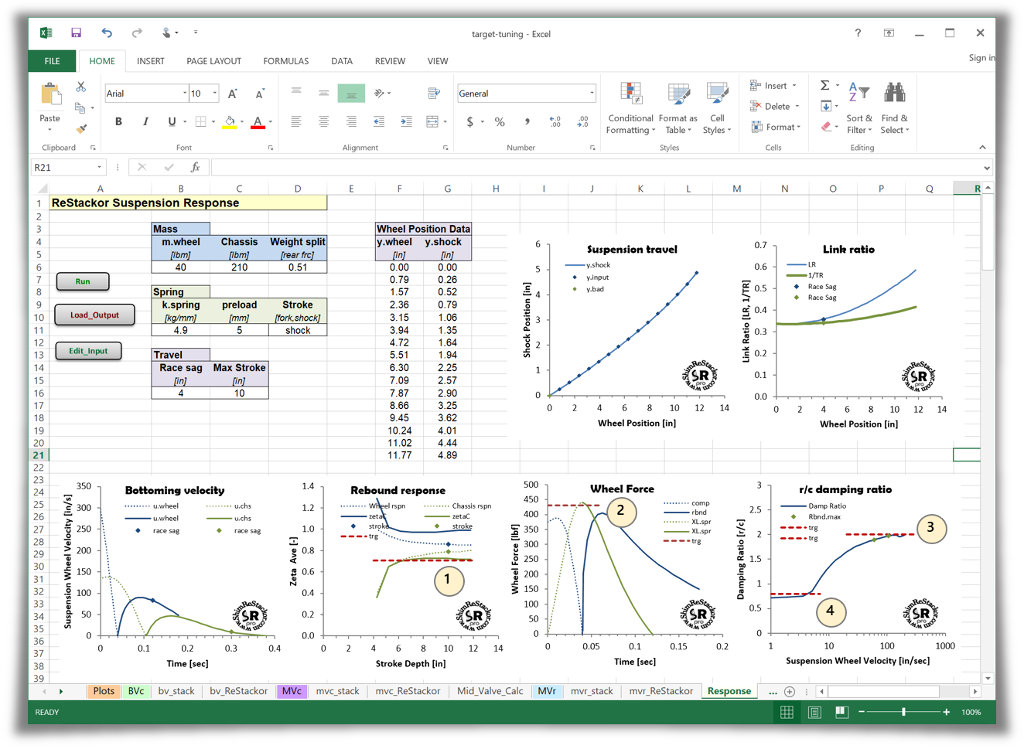
Cavitation control
Stiff compression shim stacks drive pressures in the rebound chamber to vacuum, which foams the oil. Shock absorbers use compression adjusters and fork base valves to backpressure the shock chambers and suppress cavitation oil foaming.
Tuning backpressure to match the main piston pressure drop for supression of cavitation is known as “pressure balancing” the shock.
Shim ReStackor makes pressure balancing easy (more).
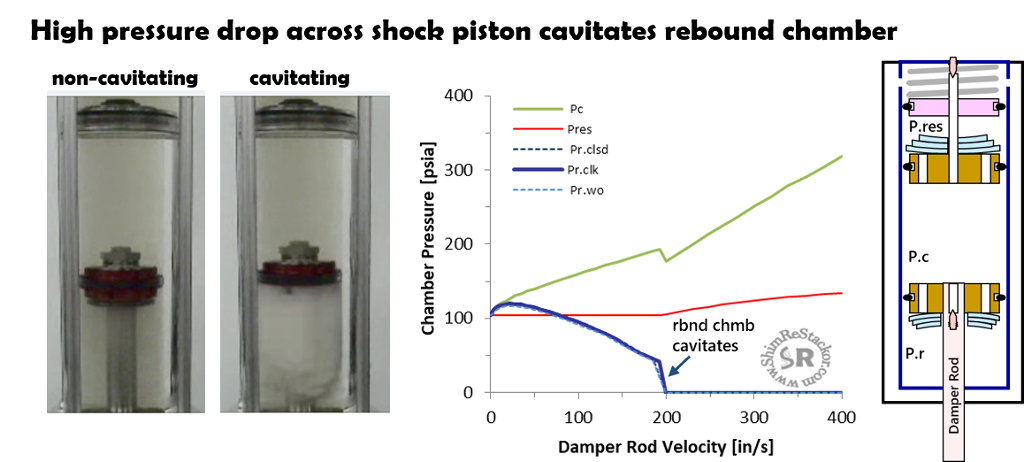
Valve port geometry measurement
Simple geometric measurements quantify the damping performance of shock absorber valves.
Shim ReStackor models valve port throat restrictions, inlet port restrictions and valve port leak jets (more).

Relentless suspension refinement
Whether you are setting up a new suspension or fine tuning a bike you have ridden for years, the capability of Shim ReStackor to evaluate detailed shim stack fine tuning allows continuous refinement of the suspension system damping performance.
Relentless fine tuning to match specific clicker settings and tailor the shape of the damping force curve to meet specific needs allows fine tuning of suspension setups far beyond the limits previously possible (more).
